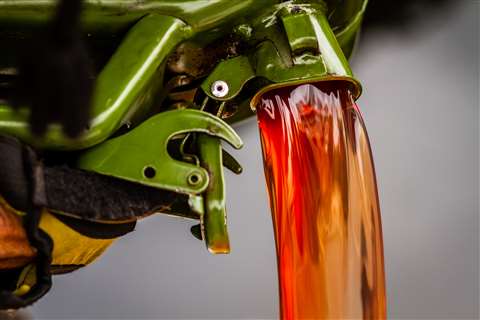Red Diesel: Everything you need to know about the new restrictions
15 February 2022
New requirements that severely restrict the permitted use of red diesel come into force on 1st April 2022. Whilst it is fairly well known that changes are afoot, the detail of the extent of the restrictions and the rules regarding the transition from red to white diesel are not so familiar.
This article aims to navigate red diesel users through the impending regulatory changes. Dale Camsell, the CEA’s senior technical consultant reports.
 (Photo: CEA)
(Photo: CEA)
The first point to stress is that the new restrictions are not limited to the end-users of machinery but also include construction equipment manufacturers that use red diesel in their operations, be it for part filling the fuel tanks of construction machinery or in their R&D activities.
The second point to stress is that users of red diesel should not wait until the approach of the deadline before considering their readiness for the changeover. It is of utmost importance that they put steps in place now since preparations need to be made well in advance of 1st April 2022.
Regarding bulk storage, e.g. manufacturer’s stock for R&D purposes, any red diesel contained in bulk storage tanks must be run down to the lowest practicable level and replenished with white diesel prior to 1st April 2022.
How to dispose of red diesel
If this step is not taken then any surplus red diesel that remains in bulk storage tanks on 31st March 2022 will need to responsibly disposed of by any of the following options:
- sell or give it to someone who is allowed to use it;
- sell or give it to any Registered Dealer in Controlled Oil (RDCO);
- dispose of it via an approved waste oil recycling or disposal company.
Records will need to be kept of how and when the fuel was disposed of, or who it was sold to and when.
Bulk red diesel users are therefore encouraged review its usage to determine how much is likely to be used by 31st March 2022 and plan how to manage any surplus stock.
If any orders for the supply of red diesel are made between now and 1st April 2022, users should only order the amount they expect to use by that date.
It will be of some relief to know that bulk storage tanks that previously held red diesel will not need to be flushed out prior to 1st April 2022.
Construction equipment manufacturers
Regarding manufacturers putting red diesel into the tank of a newly manufactured machine that is intended for application in the construction sector, only the very minimum amount should be put in, i.e. enough for it to be driven on and off transporters and around the distributor’s yard.
Red diesel cannot be put into machines used in the construction sector as of 1st April 2022. Of course, an unlimited amount of white diesel can be put into the machine at any time.
It is important to note that the restrictions do not apply to specific types of machine but rather according to their application. Machinery that is used in construction is not permitted to continue to use red diesel as of 1st April 2022.
Red diesel: permitted use
However, there are a number of applications that will be permitted to continue to use red diesel after 1st April 2022, with the agriculture, horticulture, fish farming, forestry and rail sectors being excluded from the new restrictions.
Another exception allows for the continued consumption of red diesel for use in emergency back-up generators but, and importantly, providing the fuel was obtained and stored before 10th June 2021 (when the Finance Act 2021 introducing the legislative changes received Royal Assent).
Perhaps the most tricky compliance aspect after 1st April 2022 concerns the use of individual machines that are used in both agricultural and construction applications.
The complication arises due to red diesel being permitted for use in an agricultural application but not in a construction application.
Take the example of a telehandler that is owned by a rental company; it might be hired by a client for use in an agricultural application, where red diesel is permitted, but then subsequently rented by a client for use in a construction application, where red diesel is not permitted.
The agricultural user could, after 1st April 2022, legitimately fill the tank with red diesel but if the tank was not properly flushed out prior to use by the construction client then the construction client would be failing to comply with the legal requirements.
Who is liable for the contents of a fuel tank?
It is important to stress that it is the user of the machine that will be held responsible for the content of the fuel tank rather than the machine’s owner or the person that filled it. Clearly, this is an area that requires a great deal of care.
CEA hopes that the above guidance will help users of red diesel navigate through the changes while remaining compliant. Full details can be found on the HMRC website by following this link www.gov.uk
STAY CONNECTED



Receive the information you need when you need it through our world-leading magazines, newsletters and daily briefings.
CONNECT WITH THE TEAM







